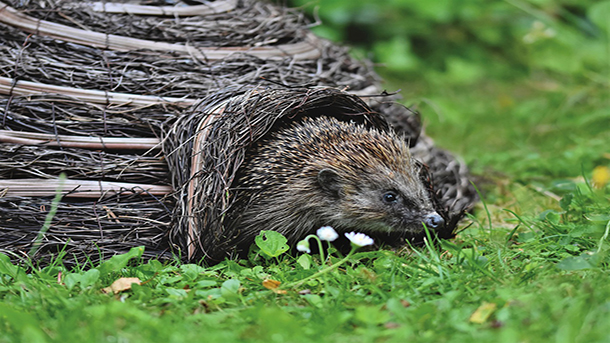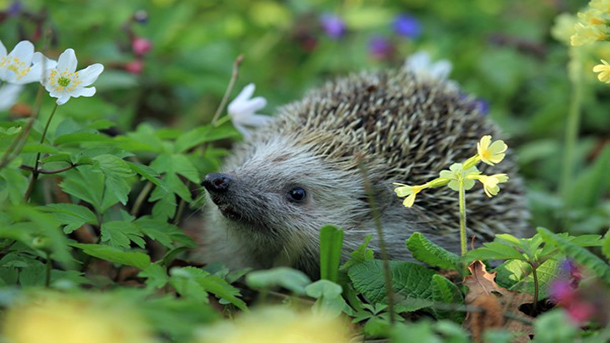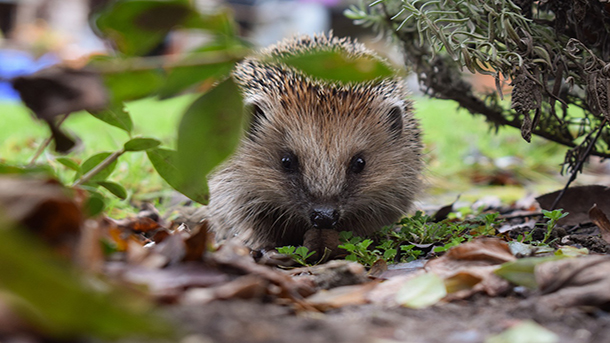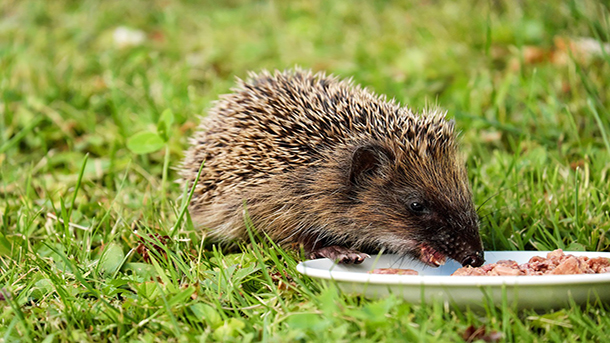Hedgehogs traditionally emerge from hibernation in late March or April and breed in the spring and summer. Over the last couple of years however, unseasonably mild temperatures have tricked hedgehogs into waking up early. This can be dangerous as there is little food around and sudden bouts of cold weather, frost and even snow can leave them vulnerable and open to predation.
In the first weeks following leaving hibernation hedgehogs, particularly juveniles, are thirsty and have depleted energy reserves. This leaves them weak and can make nesting challenging. With this in mind, it is imperative that we try to help in any way can. We have compiled a list of our top tips for helping hedgehogs this spring.
How can I make my garden hedgehog friendly?
Create hedgehog havens
If possible you should try to leave a section of your garden free from infrastructure and landscaping. After hedgehogs emerge from hibernation they will be looking to create a new nest and will require a quiet and secluded area with plenty of nesting material. Leaves, compost heaps and hedgerows makes excellent nests. You can also try stacking logs into a woodpile.

Plant flowers to encourage insects
Hedgehogs are insectivores and survive on a diet of slugs, caterpillars and worms. To increase the availability of this natural food source it is beneficial to introduce flowers and plants into your garden. Fruit trees are particularly effective as are wild flowers. You don’t have to have a large flowerbed - a potted plant is sufficient.

Hedgehog proof your pond
Believe it or not, hedgehogs are excellent swimmers. Unfortunately however, they can often struggle to get out of garden ponds, which can lead to drowning. You should ensure that you make provisions for hedgehogs to carefully escape should they end up in the water. We recommend using a wooden plank or decorative stones to create a ramp or ensuring the bank of the pond has a gentle slope.
Check long grass and sheds
Spring is our favourite time to get into the garden and begin to spruce it up ready for the summer. Before embarking on any gardening or DIY projects, such as mowing, strimming or removing an old shed, you should check that a hedgehog is not nesting in it. Equally, you should check any bonfires before you light them.
Remove garden hazards
There are a number of materials in our gardens that can be particular hazardous to hedgehogs. Slug pellets can be lethal if they are eaten; therefore you should avoid using them wherever possible. Cover open drain covers and holes and remove any fruit netting, as it can cause hedgehogs to get tangled or lead to lacerations.
Make a hedgehog gate
Hedgehogs can travel miles each night, especially after hibernation when they are looking for a mate. Fenced gardens can hinder movement and prevent breeding and the search for food. To overcome this issue you could create small holes in your fence panels to allow them to roam freely.

Should I feed hedgehogs?
Following hibernation hedgehogs will have depleted fat reserves. If food is not readily available they can quickly become under weight and fall ill. In such cases a supplementary diet of high value foods can be provided. This food should be given in addition to food they scavenge themselves. Try not to become a hedgehog’s sole source of food.
What can I feed hedgehogs?
Most garden centres and pet shops now sell hedgehog kibble, which is specially formulated with all the correct nutrients. Alternatively wet or dry dog food is suitable and serves as a good source of energy due to its high protein levels. Bread should be avoided as it serves few health benefits.
Fresh and clean drinking water is essential and should be provided in a shallow dish. Never give hedgehogs milk, as they are lactose intolerant and it can cause them to become ill.

How do I prevent other animal eating the hedgehog food?
To stop foxes, cats and badgers eating food left out for hedgehogs you should create a feeding station that can only be accessed by small creatures. This could be achieved using a pipe, dome with a small hole or even bricks.
What should I do if I find a hedgehog?
Hedgehogs are shy and nocturnal animals that predominantly move at night. If you see a hedgehog during the day it could be a sign that they are injured or unwell. If you spot a hedgehog during the day you should avoid picking up and call either Dave Cumber Vets or the RSPCA for advice.